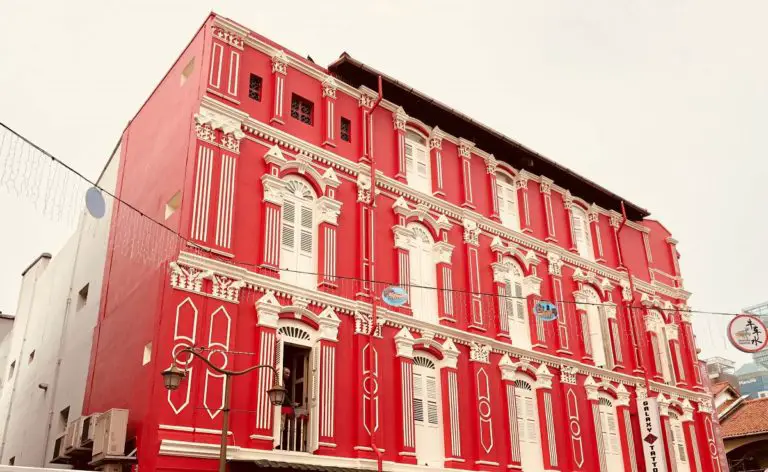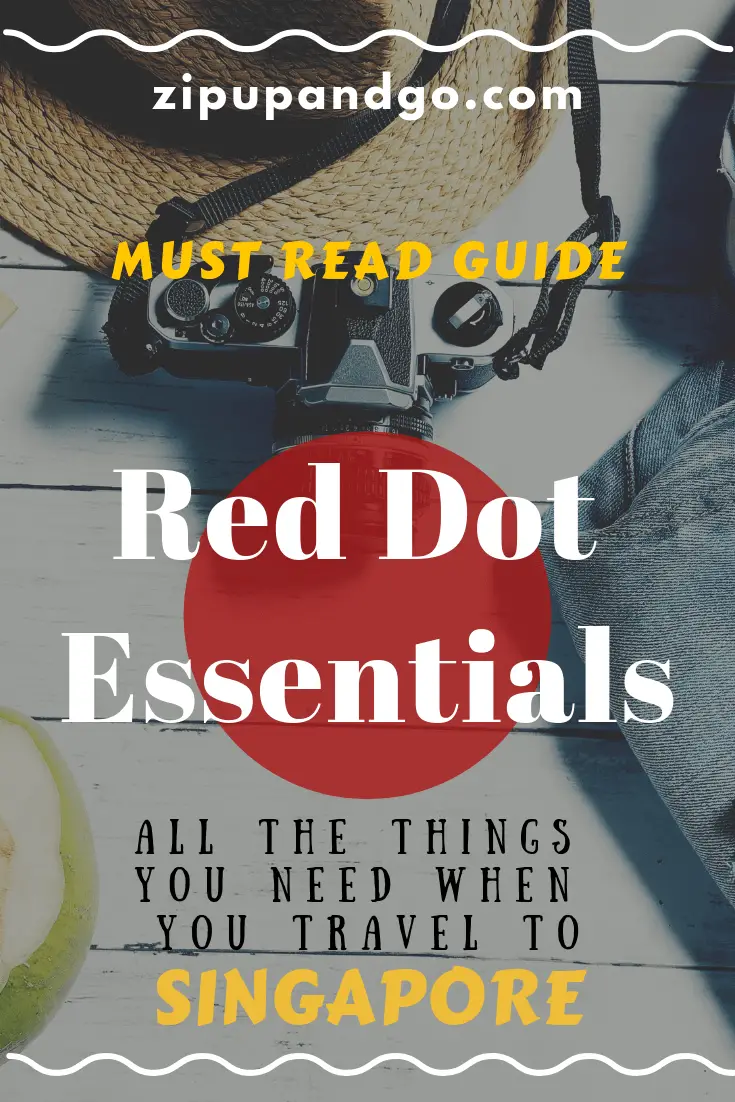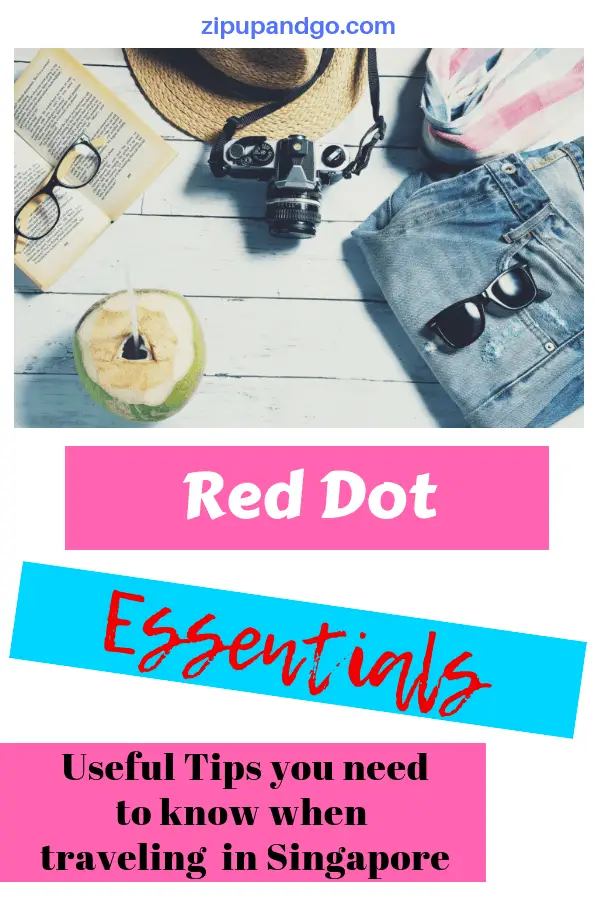Singapore Travel Guide and Essentials
Coming to Singapore and want to know the ins and outs? Let this Singapore Travel Guide and Essentials be your compass and help you navigate our concrete jungle, discovering what are some of the best foods and outdoor activities we can offer.
Some Facts about Singapore
- Founded: 1819
- Country code: +65
- Land Area: 724.2 square kilometres
- Average Temperature: 31 degree Celsius
- Population: A LOT
- Ethnic groups: 74% Chinese, 13% Malay, 9% Indian, 4% Others
So, do you know what the year 2019 means to Singapore? It is our bicentennial. 200 years!
To be more accurate though, we were inhabited long before that, but 1819 marked the year Sir Thomas Stamford Bingely Raffles arrived in Singapore.

Who’s this guy?
He’s our modern founding father, the man who set us up on the path from sleepy fishing village to becoming a thriving metropolis and melting pot of cultures today. You can visit him at 2 locations: along Boat Quay’s North Bank (known as Raffles Landing Site), or in front of the Victoria Memorial Hall.
Tip: Whichever one you visit, there are plenty of sights around them to explore, such as the Asian Civilisation Museum, Victoria Concert Hall (watch one of our local plays while you are there), National Gallery and many others, all well within walking distance.
Fast forward to 1963, which till this point Singapore was part of the British Empire. In this year, Singapore gained independence and joined Malaysia, but this relationship didn’t last. The breakup resulted in the birth of a sovereign nation in 1965. From this point on out, Singapore was finally on its own.
The leadership in the country moved quickly to map out the blueprint for its future, giving its citizens homes, formal education and placed focus on business entrepreneurship, propelling it to sustained high growth. Today, I am proud to say we are an economic miracle, and is a shining beacon of success in the world.
This also means something else, that things are pretty expensive here, earning us the moniker of one of the most costly places to live in. However, there are many ways to stretch your dollar, which you can learn more of in this blog.

Singapore has attracted migrants from all over the world, particularly East Asia, South Asia and Southeast Asia. Combined with the time we were under colonial rule, the result is a marriage of contrasting cultures to become one unique people.
Wander through our five foot ways, fill your bellies with delicious local cuisine and treat yourself to a wonderful mix of modern architecture and classic buildings.
Best time to visit
Singapore has a climate that is described as tropical rainforest, and there really isn’t any seasons here, or rather, summer all year round. What we do have is high humidity and 2 monsoon seasons. Don’t let that put you off! As there are so many good reasons to visit. Here is a look at the usual climate by months:
December to early March
- Northeast Monsoon season, which means constant rain during December and January, easing off in February and March, where it turns windy and dry
- Average rainy days:
- December 18 days
- January 13 days
- February 8 days
- March 13 days
Late March to May, October to November
- Period before next monsoon, which kind of means our regular weather, hot and humid. Thunderstorms are common during this time and they are usually over pretty quickly. Take note there will be more rain towards the year end
- Average rainy days:
- March 13 days
- April 14 days
- May 14 days
- October 15 days
- November 18 days
June to September
- Southwest Monsoon season, which doesn’t have that much rain, and normally windy. Showers across the island will be common, but again, they don’t normally last very long
- Average rainy days:
- June 12 days
- July 14 days
- August 14 days
- September 13 days
You will have noticed by now, it will be likely that you encounter some blessings from the sky now and then. Oh and humidity is pretty much never below 80. But better than the bitter cold right?
Check out our official meteorological site for up to date information.
What to pack
- Deodorant, first on the list for obvious reasons, you will perspire!
- Wet wipes
- Raincoat/poncho or travel umbrella
- Rain cover for day pack
- Sunglasses
- Sunscreen
- Mosquito repellent if you’re visiting outdoors
- Water bottle, tap water is drinkable
- Xiong bao bei (magical spray that turns your stinky clothes fresh smelling. But please, this does not replace washing!)
- Cotton T-Shirts
- Bermudas
- Comfortable pair of sneakers, as you will likely walk a lot
- Light dresses
- Swimwear, no skinny dipping please!
- Travel Adaptor. Singapore uses type G power sockets.
- Day pack to put everything in!
Money
It is quite easy to figure out the Singapore currency, all colour coded nicely. There are no 2 denomination that has the same colour.
Coins: 5, 10, 20 & 50 cents, $1
Notes: $2, $5, $10, $50, $100, $1000, $10000
Word of advice, try to get your money changer to give you smaller notes like $10 and $50 as they are most commonly used. In some cases, it will be hard for you to get change if you use a $1000 note, such as at the hawker centres.
Changing money in Singapore is reliable and money changers are found across the island. You can use this site to check out the best rates by area.
Alert! Tipping is not compulsory here in Singapore.
Internet Access
You probably came to this page for this right? I mean, what kind of Singapore Travel Essentials page would this be without mentioning internet access. If I were to make a wild guess, travellers do not actually look for internet access as recent as 20 years ago. But of course, today it is quintessential.
According to this speedtest, Singapore has one of the top internet speeds in the world, and lucky you, we have a wide coverage of public WiFi as well. So next time you are here, search for the network “Wireless@SG” to register and get access. Download the iOS or Android app and follow the on screen instructions to set it up.
Where else can you get free internet? Plenty of cafes, bars, restaurants, shopping malls offer it for free. Most of them have signs displayed prominently, but if you don’t see one, make sure to check with the counter.
If free internet is not your cup of tea, you should consider getting a Pocket WiFi. It is a router that gives you private Wifi, and allows you to have multiple devices connected to it at once. Talk about convenience!
These handy machines gives you 4G access, and last I checked, average 4G speeds in Singapore is almost 54Mbps. No more complaining about slow internet! Get yours when you land in Singapore at Changi Airport.
They are found in all terminals and you can pre-book from the Changi Recommends website.
Getting to Singapore
Singapore is quite well known globally for its airport, having snagged multiple “Airport of the Year” awards consecutively and the team is always working hard to maintain this title.
Since it is a major transportation hub, more than 100 airlines fly in to Singapore and as a matter of fact, some 65 million visitors pass through our airport at some point during the year!
Airport
The airport in Singapore is known as Changi Airport and is located at the east end of the island, around 18 kilometres away from the city centre (using City Hall MRT as a guide).
It currently has 4 terminals, with a new one slated to open sometime in the 2030s. Terminal 1 to 3 are connected by the SkyTrain, which is a monorail system while Terminal 4 can be reached only by a shuttle bus from Terminal 2. That means you will need to take the Skytrain to T2 if you are coming from T1 or T3.
In 2019, Jewel Changi Airport was opened and this is the latest in the efforts to encourage visitors to fly into Singapore. Essentially, it is a giant mall that offers a multitude of services from dining, shopping, concierge and bag drop that caters well to visitors transiting or waiting to board their flights.
Of course, it has also become an attraction in its own right for tourists and locals alike.
Car/Bus/Train
The only way to enter Singapore by land transport is through one of two checkpoints, located at either Tuas or Woodlands. These two checkpoints serves the traffic coming in from our neighbour Malaysia.
There are some requirements and costs for foreign vehicles entering Singapore and more information can be found on the One Motoring website provided by our Land Authority.
For travels by train, the journey will end at the Woodlands Train Checkpoint.
Boat/Ferry
Singapore occupies a strategic location in the SouthEast Asia region and it is a port of call for many ships sailing through.
Large cruise liners frequently stop by and if you are coming in from one of these ships, the disembarkation point will be at the Marina Bay Cruise Centre, located in the southern part of the island near the city centre.
Besides Marina Bay Cruise Centre, there are also the Harbourfront Cruise and Ferry Terminal and Tanah Merah Ferry Terminal. You can read more on the official website too.
Getting around in Singapore
Getting around in Singapore is easy as pie.
Public transport brings you to places all across the island.
From major tourist sites to the leafy suburbs, you should use the well connected bus and train system.
Buses start running from 5.30am and runs all the way till 11.30pm at night, similar to the MRT service.
Some bus services may have differing timings, so do check it especially late at night.
I’m sure you don’t wish to miss the last service.
For convenience, I would definitely recommend this app called MyTransport (iOS, Android) from our transport agency.
You can search by bus service, plan your journey and it even tells your the bus arrival times.
Not only that, the information you want to know about MRT and driving can be found in there as well.
Their site can be found here.
Take note there are no racks on MRT and public busses for luggage. My advice would be to move to one of seatless cabins where there’s more standing room.
If you need to sit, your best bet would be the first or last cabin where it’s usually less crowded. Above advice will not work during peak hours where the trains and buses are very crowded.
Another alternative, though I discourage, is taking the taxi. That said, Singapore is ranked in 2017 as the 20th cheapest place among “80 most visited cities” to take taxi.
With an estimated 20000 taxis roaming our streets, you may think that it will be easy to hail one, but it really depends on your location and the time of day.
In some popular areas, you will find that taxis are scarce and queues are long. Consider using a ride hailing service instead if you need a car.
We are served by a number of operators but frankly, we have mostly been using Grab and Go-Jek only. Download their apps here:
Grab: iOS, Android
Go-Jek: iOS, Android
Best things to eat in Singapore
If you didn’t know by now that Singapore has some of the best and most diverse food around, we might be tempted to say you are living under a rock!
Seriously, the food game in Singapore is right up there with the biggest cities in the world and here are some of the things we think you should not miss when you are here.
Hainanese Chicken Rice
This is a dish of poached chicken served with rice cooked to perfection with ginger and garlic, and is easily the national favourite. No tourist should ever come to Singapore and not eat this.
Make sure to read our post on the 10 Best Yummy Food in Singapore!
Secret: they all costs less than $1.50 each!
Fried Carrot Cake
A very simple pan fried dish that is made up of radish, eggs and preserved turnips, it has a savory and sweet taste. You can also opt to have it in two versions, either black or white (fried without black sauce).
Fried Kway Teow
Slightly similar to the Fried Carrot Cake in terms of cooking style, this dish of flat rice noodles is typically cooked with eggs and cockles. No wonder what is that? Then you must give it a try!
Chili Crab
Our national dish never fails to satisfy even the most picky of eaters and for good reason. Crabs cooked in a combination of sweet and spicy sauce and best eaten with fried buns (mantou), there are numerous locations you can enjoy this wonderful dish.
Bak Chor Mee
We would fathom a guess to say this is one of the most underrated yet most consumed dishes in Singapore. It is such a simple concoction of mince pork, noodles with a splash of sauces but yet taste so good that you can practically live on this.
Best Drinking Spots in Singapore
As you know, Singapore is pretty well known too for being one of the most expensive places in the world, and that strongly applies to alcohol.
Due to the high tax rate on vices, most people would have to burn a big hole in their pocket if they wanted to paint the town red.
That said, what’s stopping you from having a nice evening out with your mates after a long day of touring Singapore? Over here, we will show you some of the best places to have a tipple.
Holland Village
This enclave is situated out of the main city area, but still easily within reach by MRT or bus. It is basically two bar and restaurants lined streets with a few other services smattered in between.
Prices are pretty reasonable here and it is not uncommon to find bars that offer one for one deals through the night. Plus, if you wish to avoid the big tourist crowds, this is one of your better bets.
Budget around $11 for a beer here.
Clarke Quay
Home to one of the top clubs in the world, our home grown Zouk takes residence here. You will also find numerous flashy and unique bars and restaurants but expect to pay a premium of your cocktails.
Budget around $18 for a beer here.
Katong/Siglap
The location of the wealthy back in the mid twentieth century, this neighbourhood is still home to some beautiful homes but has also seen an explosion of watering holes along its main street.
If you are keen on some old school architecture and eclectic bars, this is your spot.
Budget around $15 for a beer here.
Best Nature Spots in Singapore
Although Singapore can be considered a concrete jungle to many due to its unmistakable skyscrapers, what might be lesser known is that Singapore is home to a large concentration of greenery and animal species.
What most people doesn’t know is that we have over 300 parks and nature reserves spread throughout our island that makes for a great day out in nature.
Here are a few of our favourites.
Botanic Gardens
Our only Unesco World Heritage site in Singapore, this leafy park just lying on the fringe of the Orchard shopping belt is a perfect place to start your nature trip.
Beautifully maintained and large open spaces allows you and your mates to spend a lazy morning here with a picnic and a kick around.
Also check out the National Orchid Garden within the Botanic Gardens to see some of our national flower, the Vanda Miss Joaquim.
MacRitchie Reservoir Park
Situated right in the middle of the island is the MacRitchie Reservoir Park. You can easily spend a whole day out here hiking its trails and viewing the wildlife.
At the heart of the park lies a treetop walk that is elevated up to 25 metres off the forest grounds. Beware of the macaques though, who are not afraid of humans and would venture to snatch away any loose items on you.
Sungei Buloh Wetlands Reserve
Another one of Singapore’s Nature Reserves, this unique landscape lets you observe its wildlife such as the mudskippers, crabs, shellfish and water snakes that lives here.
Every year from September to March, you also get the opportunity to see flocks of birds migrating through these lands.
More information about our parks can be found here.
Language
We have saved the best for last.
Firstly, some facts you might not know:
– Malay is the national language of Singapore, as the Malays are recognised as the indigeneous people of Singapore.
– There are 4 main languages, English being the most widely spoken, and Malay, Chinese and Tamil.
– Most Singaporeans are bilingual, usually a mix of English and their Mother Tongue
So why keep this section to the last and call it best? SINGLISH!
To simplify it, Singlish is colloquial Singapore English, or local slang. It is a unique and important piece of the Singaporean identity. The variations to this ‘language’ is huge and has its own vocabulary. It also causes lots of kicks and giggles for foreigners exposed to it for the first time. It is almost like a mystery, like an art form. No classroom can teach you to be proficient in it. Our ang-moh friends who attempts it will certainly crack us up, but at the same time gain our approval.
Do you want to learn a few words to impress the locals?
To immerse fully in the Singapore Experience, I encourage you to use a few of these words (although it may be hard to tell sometimes, most foreigners who have stayed here has also picked up Singlish, so don’t worry lah). Don’t need to pay attention to grammar too. Best.
Word: Lah
What: usually used at end of sentences to add emphasis.
How: when your pesky colleague asks if he can share your chips, you say ‘cannot Lah!’
Word: Huh
What: a verbal question mark.
How: when that pesky colleague says he doesn’t know how to turn on his PC, you go ‘huh, are you serious?’
Word: Leh
What: again, used at end of sentence, but more of defeatist, doubtful.
How: when your pesky colleague asks you when will pay increment happen, and you say ‘I don’t know leh’
Word: Makan
What: to eat.
How: pretty straight forward, like ‘Bro, go where makan for lunch?
Word: Auntie/Uncle
What: term used to greet elderly person, especially useful at local eating places like kopitiam (see next entry), foodcourt, hawker centres.
How: At foodstall, ‘Uncle, can I have a can of green tea please!’
Word: Ang-Moh
What: Literally means red hair, used to describe Caucasian foreigners.
How: New colleague comes into office. Someone remarks, ‘Why hire Ang-Moh colleague huh?’
Word: Kopitiam
What: Coffeeshop, but dissimilar to what you see in Europe etc. This is usually a large unit, with several stalls selling local food, occasionally you will find something fanciful too
How: Walk up to elderly lady and ask, ‘Auntie, where is the kopitiam’
Word: Chope
What: to reserve a seat, usually by placing a packet of tissue paper, office lanyard or name card. Only used at hawker centres, kopitiams and foodcourts. DO NOT TRY THIS AT CAFES, RESTAURANTS and the like!
How: During lunch at hawker centre, you spot an empty table. Tell your pesky colleague to go Chope table!
Conclusion
So what are you planning to do in Singapore? Share with us your ideas too!
Is this Singapore Travel Guide useful?
Why not check out our resources page too to help in your trip planning?
Here are more of our articles on Singapore:
- Best Places to Stay in Singapore based on your Interests
- Things to do in Jewel Changi Airport
- Visit Singapore on a Friendly Budget
- One day in Singapore itinerary
Or did you think something is missing? Let us know. We are happy to learn more too.
Remember to pin it on Pinterest and share it on your social media too!




A really enjoyable and informative article – loved learning about the local phrases that are common in Singapore!
Hey Coralie, thanks for dropping by and glad that you liked it.
Indeed we have some “cute” phrases here! We should add more of it hah!
Really loved reading this blog. Too much information and the local terms did impress me. Using it in future when I travel to Singapore for sure.
Thanks for your kinds words! Hope you will enjoy yourself in Singapore when you visit. Cheers!